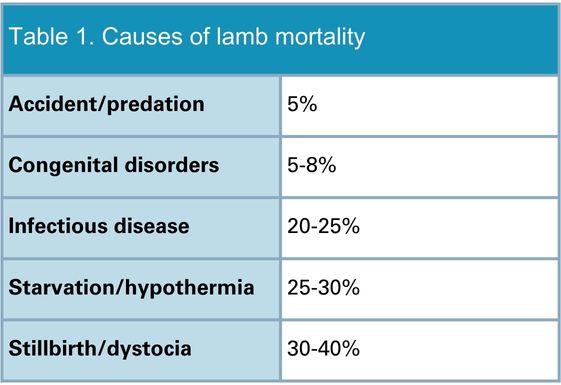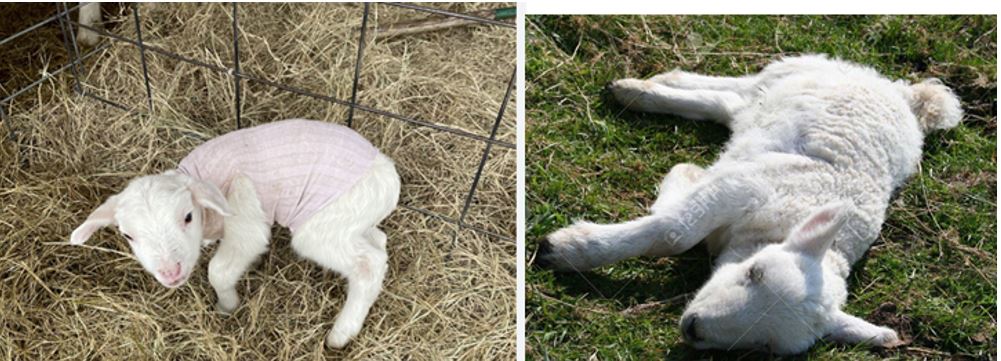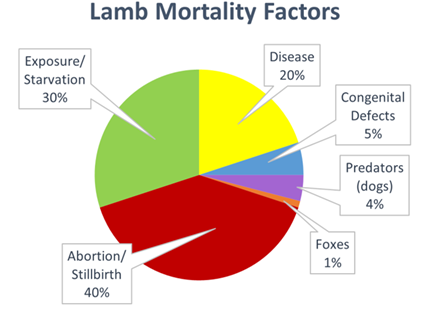Written by Dr T.B Barragry
(1) Hypothermia and Hypoglycaemia in Young Lambs
Starvation, hypothermia, and hypoglycaemia are amongst the highest causes of mortality in newborn lambs. From birth to 6 hours of age – the wet newborn lamb loses heat very rapidly and can quickly become hypothermic. This is more likely to occur in cold, wet, or windy conditions. Adequate colostrum and brown fat (a type of fat that the lamb is born with) help the lamb through this period by increasing heat production.

From 6 hours to 3 days after birth – starvation leads to a drop in heat production and the lamb becomes hypothermic. This can happen even in warm, sunny weather. All the lamb’s brown fat has been used by this time and it needs an adequate, good quality colostrum intake to stay warm. Newborn lambs have only minimal reserves of brown fat and are borderline in their blood glucose levels. Hence, hypothermia and stress are major contributors to early death in young lambs. Hypothermia has many causes and can affect lambs at different ages. In newborn lambs less than five hours old, hypothermia often occurs due to prolonged exposure to cold temperatures.

Difficult or premature births can cause weak lambs which contributes to hypothermia, because these lambs do not get up and nurse warm colostrum as readily as lambs that have a normal birth. Poor mothering can also lead to hypothermia if an ewe fails to thoroughly lick her lambs dry or if she abandons a lamb. If the ewe has poor body condition and there was a lack of adequate nutrition during gestation, the risk for hypothermia increases as lambs born from these ewes are often weak and colostrum production is decreased.
Hypoglycaemia, or low blood sugar, often accompanies hypothermia in newborn lambs because they have not ingested colostrum which is both a source of energy, immunity, and glucose
Newborn lambs are fragile creatures and extremely susceptible to disease. They are born with an almost sterile gut microbiome, and an exceptionally low inherent immunity. They are thus unable to defend themselves immunologically and hence are very susceptible to infections, especially gut infections. Thus, good quality colostrum is of critical importance. In addition, lambs are born with low levels of crucial vitamins especially Vitamin E & A, which similar to antibodies, do not cross the placenta into the foetal lamb.
In an attempt to maintain temperature and to survive, the lamb may shiver and undergo multiple smooth muscle contractions. It burns glucose to release energy in an effort to keep warm, and it can very quickly run into hypoglycaemia, acidosis, coma, and death.
Lambs at Risk:
The lambs that are at the greatest risk of getting hypothermia and hypoglycaemia include:
• lambs from ewes in poor condition
• lambs from very old or very young ewes
• twins and especially triplets.
• small and premature lambs.
• lambs which are limp or weak at birth.

Provita Jump Start is specially designed and formulated to prevent and treat hypothermia/hypoglycaemia in new lambs. It contains high levels of badly needed glucose and energy as well as fast and prolonged acting precursors of blood glucose such as propylene glycol. All of these acts together to immediately boost the newborn lamb’s blood sugar and energy levels, and to prevent collapse from hypothermia and hypoglycaemia. In addition, Jump Start contains high levels of unique IGY antibodies which help to combat E. coli infection. Jump Start also supplies high quantities of selenium and vitamin E to stimulate the immune system, together with cobalt and vitamin B12 which accelerate the formation of greater numbers of red blood cells. This increased blood cell count ensures maximal oxygenation of vital tissues and organs and increased vigour and vitality in the young lamb. “Jump Start” has been clearly demonstrated under field conditions to be a unique product for preventing and treating hypothermia/hypoglycaemia in young lambs.
